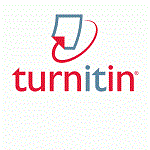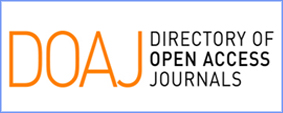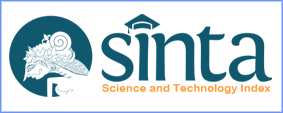Analisis Gaya Berpikir Matematis Berdasar Teori Mental-Self Government (MSG) Ditinjau Dari Dimensi Pembelajaran Sternberg
Abstract
Abstrak
Penelitian ini bertujuan untuk mengidentifikasi kemudian menganalisis gaya berpikir matematis mahasiswa Semester V dalam menyelesaikan soal bertipe tingkat tinggi. Penelitian ini berjenis deskriptif dengan data kualitatif berupa hasil tes mahasiswa pada Mata Kuliah Struktur Aljabar. Jumlah mahasiswa yang diberikan tes bertipe tingkat tinggi berjumlah 22 orang yang direduksi menjadi enam orang. Hasil penelitian ini didasarkan pada karakteristik gaya berpikir matematis ditinjau dari dimensi pembelajaran yaitu konservatif dan liberal. Berdasar hasil penelitian, mahasiswa dengan gaya berpikir matematis tipe konservatif menyelidiki subgrup dengan menggunakan definisi subgrup yaitu menggunakan langkah-langkah pembuktian grup antara lain tertutup, asosiatif, mempunyai elemen identitas, dan invers. Gaya berpikir matematis tipe konservatif cenderung menggunakan strategi penyelesaian masalah yang telah dikenal dan dilakukan sebelumnya. Mahasiswa dengan gaya berpikir liberal menyelidiki subgrup dengan menggunakan Teorema One Step Subgroup Test dan Two Steps Subgroup Test sehingga ada beberapa tahapan pembuktian grup yang dieliminasi. Mahasiswa dengan gaya berpikir matematis tipe liberal menggunakan pengetahuan terbaru yang diperolehnya sehingga pengetahuan lama diadaptasi.
Kata Kunci: gaya berpikir matematis, gaya berpikir matematis tipe liberal, gaya berpikir matematis tipe konservatif, soal bertipe tingkat tinggi
Abstract
This research aimed to identify and then analyze the mathematical thinking style V Semester student in resolving the high-ordered thinking skill. This was a descriptive study using qualitative data in the form of student test results on Algebraic Structures Courses. The number of students who were given a high degree of type tests amounted to 22 students who were reduced to six men. The results of this research were based on the characteristics of the style of thinking mathematically in terms of the dimensions of learning that was conservative and liberal. Based on the results of research, students with mathematical thinking styles of the conservative type investigate largest using the definition of largest i.e. used measures of proof among other group was closed, associative, has an identity element, and the inverse. Mathematical thinking conservative type styles tend to use the strategies of solving problems that have been known and done before. Students with liberal thinking investigate largest style by using the theorem of One Step Subgroup Test and Two Steps Subgroup Test so that there were several stages of proof the group was eliminated. Students with mathematical thinking liberal type styles using the latest knowledge acquired so that the old knowledge was adapted.
Keywords: mathematics thinking style, liberal mathematics thinking style, conservative mathematics thinking style, high-ordered thinking problems
Keywords
Full Text:
PDFReferences
AlGhraibeh, A. M. A. (2015). Learning and Thinking Styles Based on Whole Brain Theory in Relation to Emotional Intelligence. OALib, 02(05), 1–14. https://doi.org/10.4236/oalib.1101436
Aljojo, N. (2017). Journal of Technology and Science Education DIFFERENCES IN STYLES OF THINKING ‘ IN LIGHT OF STERNBERG ’ S THEORY ’: A CASE STUDY OF DIFFERENT EDUCATIONAL LEVELS IN, 7(3), 333–346.
Baylis, J., & Gallian, J. A. (1991). Contemporary Abstract Algebra. The Mathematical Gazette (Vol. 75). https://doi.org/10.2307/3619533
Caroli, D., Elvira, M., & Caroli, M. E. De. (2012). Redalyc.CREATIVITY AND THINKING STYLES IN ARTS, SCIENCES, AND HUMANITIES HIGH SCHOOL STUDENTS.
Dİkİcİ, A. (2014). Relationships between Thinking Styles and Behaviors Fostering Creativity : An Exploratory Study for the Mediating Role of Certain Demographic Traits, 14(1), 179–201. https://doi.org/10.12738/estp.2014.1.1939
Emamipour, S., & Esfandabad, H. S. (2013). Developmental Study of Thinking Styles in Iranian Students University. Procedia - Social and Behavioral Sciences, 84(1997), 1736–1739. https://doi.org/10.1016/j.sbspro.2013.07.023
Ferri, R. B. (2012). Mathematical thinking styles and their influence on teaching and learning mathematics. 12th International Congress on Mathematical …, 12. Retrieved from http://www.icme12.org/upload/submission/1905_f.pdf
Ibrahim, I., & Ahmad, A. (2016). Teaching Styles Preferred By Students on Their Achievement in History Subject. IOSR Journal Of Humanities And Social Science (IOSR-JHSS), 21(6), 47–53. https://doi.org/10.9790/0837-2106054753
Implications, T. (2011). a Study of Learning-Thinking Style of Secondary School Students. Trends in Education, (December), 115–123.
Kediri, I. (2013). STRATEGI PENGEMBANGAN SOAL HIGHER ORDER THINKING SKILL (HOTS) DALAM KURIKULUM 2013 Moh. Zainal Fanani IAIN Kediri, 57–76.
Kelas, S., Kulisusu, V.-S., & Pendekatan, M. (2015). MENINGKATKAN KEMAMPUAN MEMECAHKAN MASALAH OPEN-ENDED Pendahuluan, 3(1), 75–90.
Kusuma, M. D., Rosidin, U., & Suyatna, A. (2017). The Development of Higher Order Thinking Skill ( Hots ) Instrument Assessment In Physics Study, 7(1), 26–32. https://doi.org/10.9790/7388-0701052632
Lehmann, T., & Ifenthaler, D. (2012). Influence of students ’ learning styles on the effectiveness of instructional interventions. International Conference on Cognition and Exploratory Learning in Digital Age (CELDA), 180–188.
Moutsios-Rentzos, A., & Simpson, A. (2010). The thinking styles of university mathematics students. Acta Didactica Napocensia, 3(4), 1–10. Retrieved from https://login.proxy.lib.fsu.edu/login?url=http://search.proquest.com/docview/1697501944?accountid=4840
Nepal, B. (2016). Relationship between Mathematical Thinking and Mathematics Achievement. IOSR Journal of Research Mrthod in Education (IOSR-JRME), 6(6), 46–49. https://doi.org/10.9790/7388-0606044649
Oflaz, M. (2011). The effect of right and left brain dominance in language learning. Procedia - Social and Behavioral Sciences, 15, 1507–1513. https://doi.org/10.1016/j.sbspro.2011.03.320
Onal, H., Inan, M., & Bozkurt, S. (2017). A Research on Mathematical Thinking Skills: Mathematical Thinking Skills of Athletes in Individual and Team Sports. Journal of Education and Training Studies, 5(9), 133. https://doi.org/10.11114/jets.v5i9.2428
Özcan, Z. Ç., İmamoğlu, Y., & Bayraklı, V. K. (2017). Analysis of sixth grade students’ think-aloud processes while solving a non-routine mathematical problem. Kuram ve Uygulamada Egitim Bilimleri, 17(1), 129–144. https://doi.org/10.12738/estp.2017.1.2680
Pantziara, M., Gagatsis, A., & Pitta-Pantazi, D. (2004). The use of diagrams in solving non routine problems. 28Th Conference of the International Group for the Psychology of Mathematics Education, 3(January), 489–496.
Sternberg, R. J. (2005). The Theory of Successful Intelligence, 39(2), 189–202.
Turki, J. (2012). Thinking Styles " In Light of Sternberg ’ s Theory " Prevailing Among the Students of Tafila Technical University and Its Relationship with Some Variables Educational Psychology Section. American International JOurnal of Contemporary Research, 2(3), 140–152.
Vale, I., & Barbosa, A. (2017). The Importance of Seeing in Mathematics Communication. Journal of the European Teacher Education Network, 12, 49–63.
Zhang, L. (2017). Thinking Styles and Modes of Thinking : Implications for Education and, (May 2002). https://doi.org/10.1080/00223980209604153
Article Metrics
Abstract has been read : 2093 timesPDF file viewed/downloaded: 0 times
DOI: http://doi.org/10.25273/jipm.v7i2.3599
Refbacks
- There are currently no refbacks.
Copyright (c) 2019 JIPM (Jurnal Ilmiah Pendidikan Matematika)

This work is licensed under a Creative Commons Attribution-ShareAlike 4.0 International License.
View JIPM Stats
JIPM indexed by:
Copyright of JIPM (Jurnal Ilmiah Pendidikan Matematika) ISSN 2502-1745 (Online) and ISSN 2301-7929 (Print)













